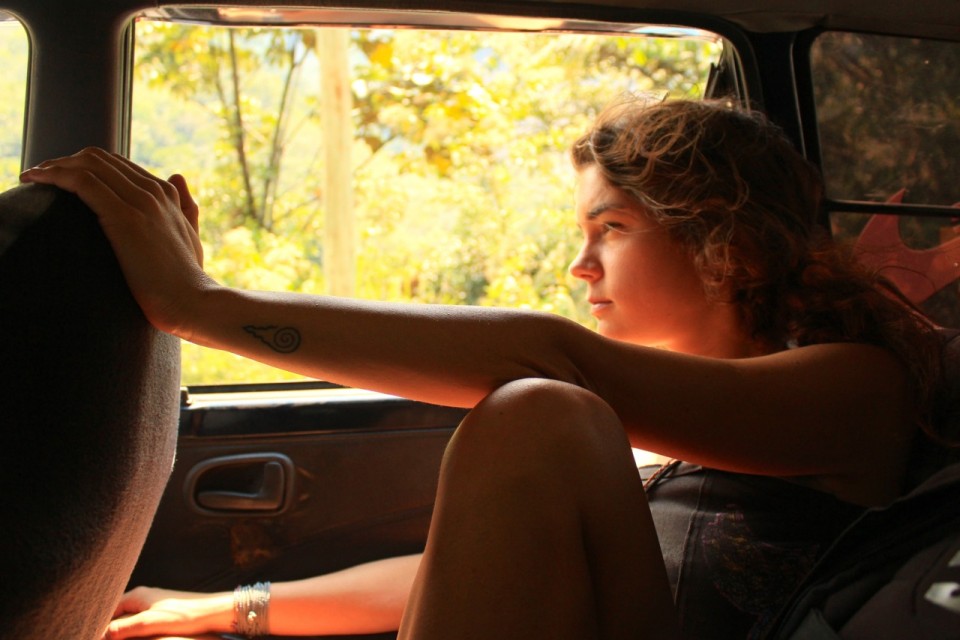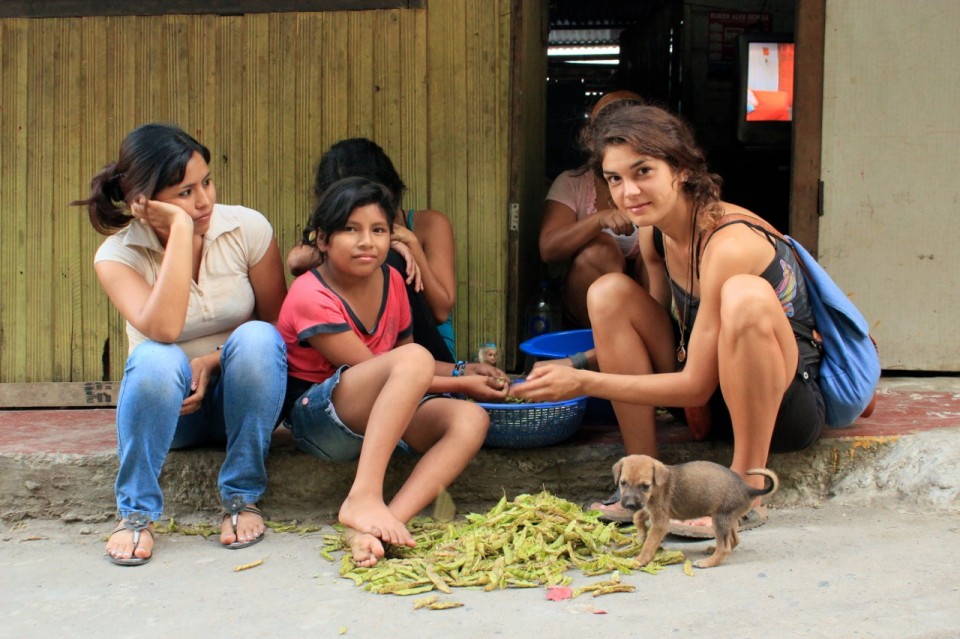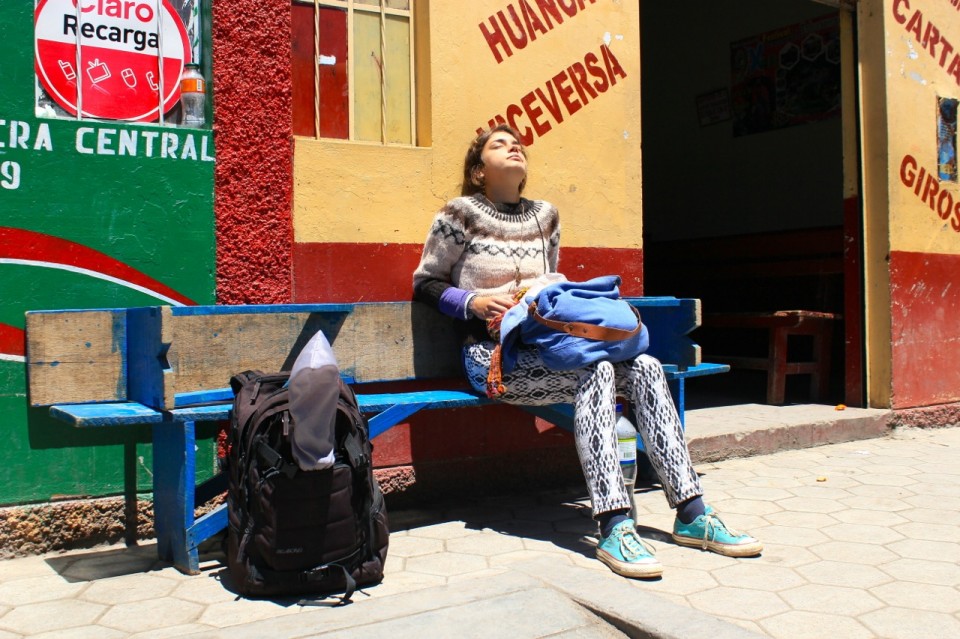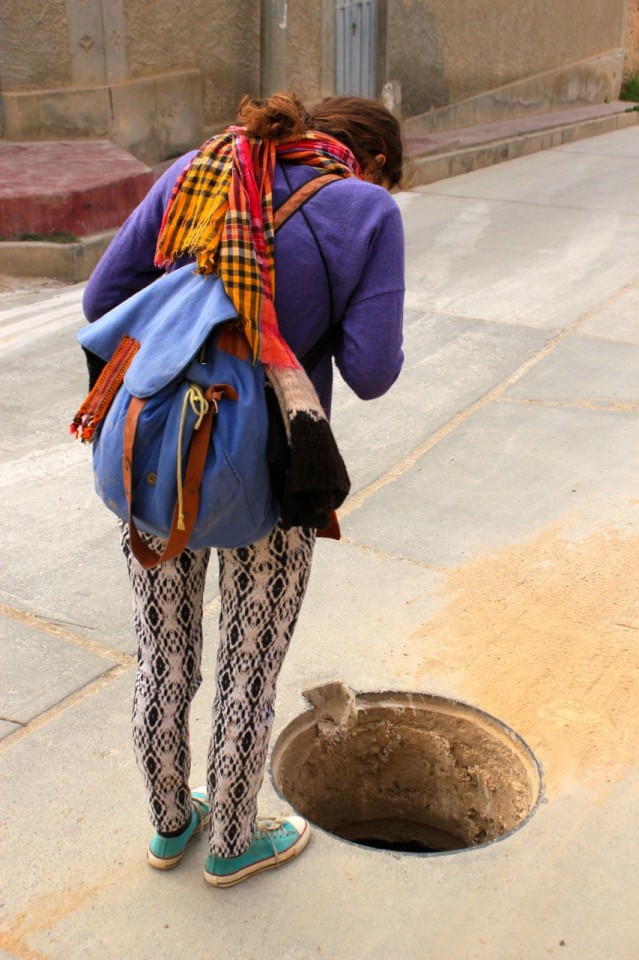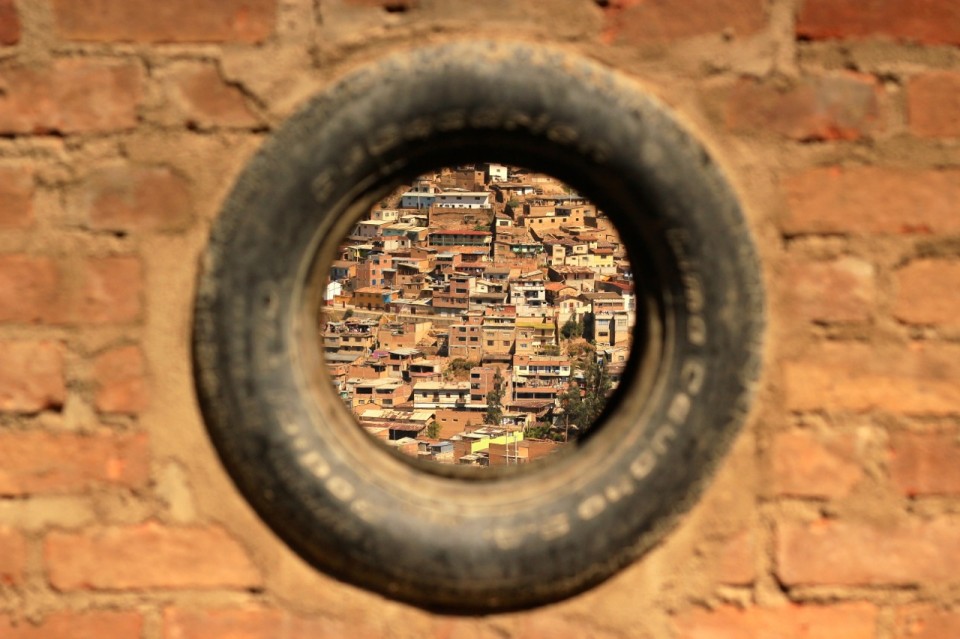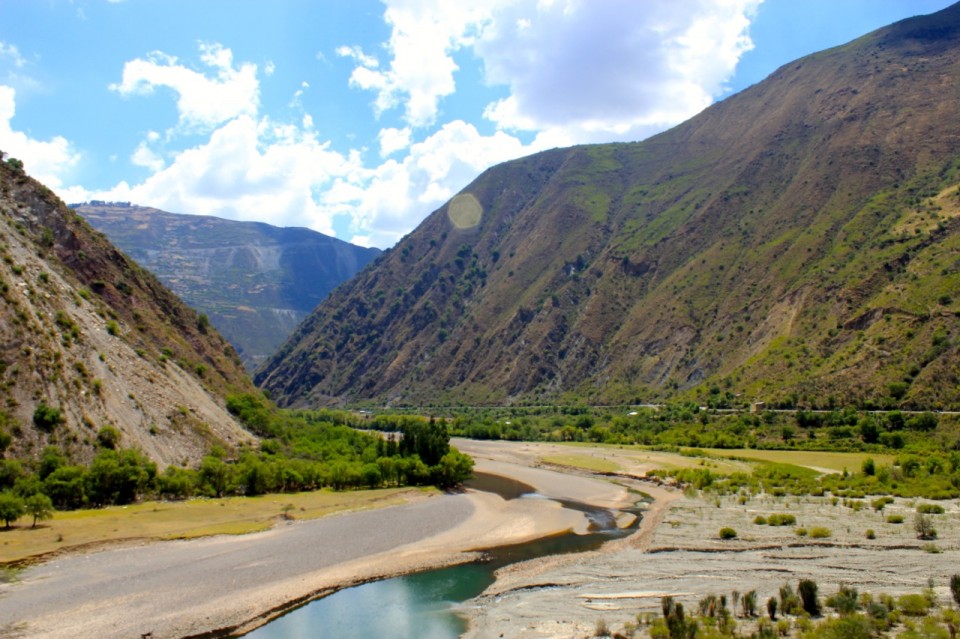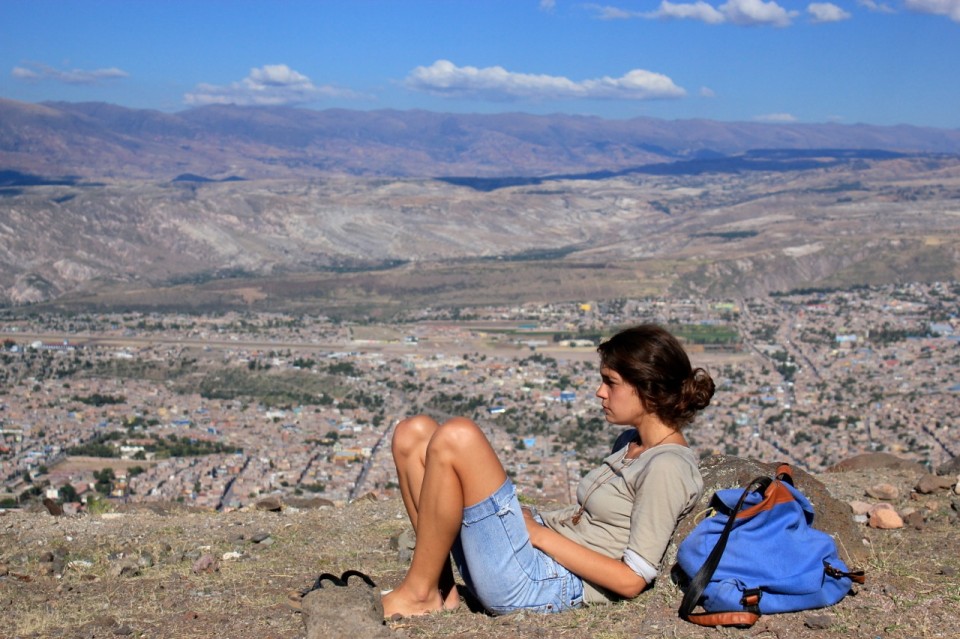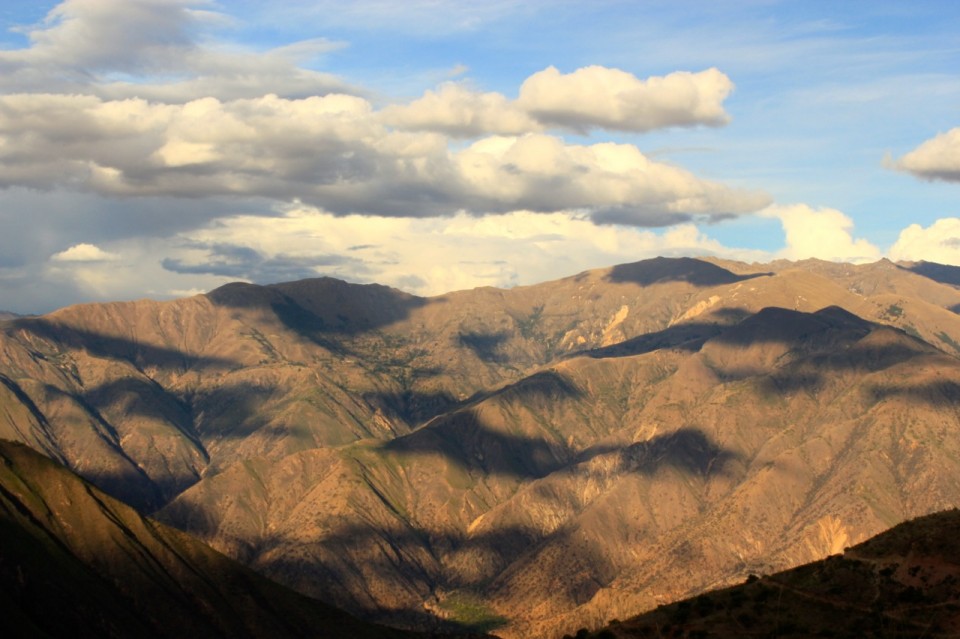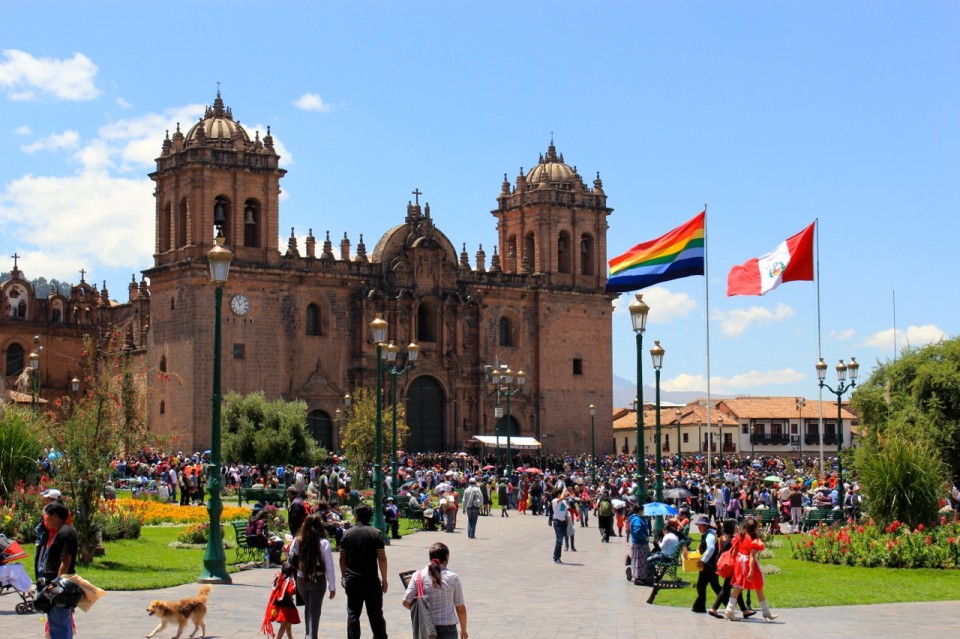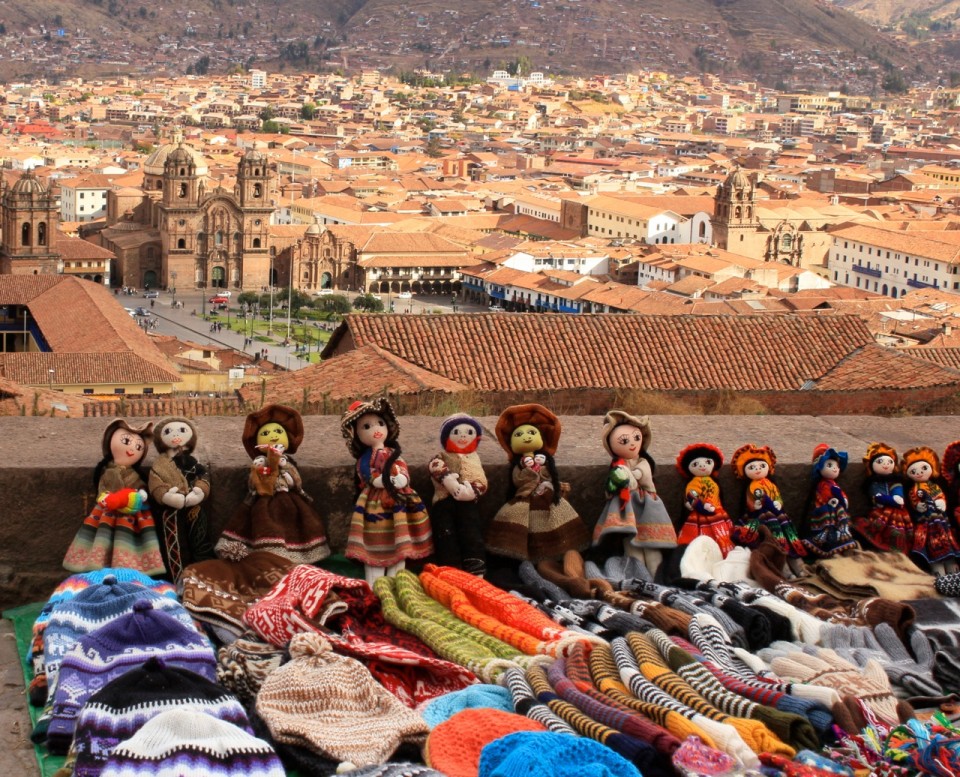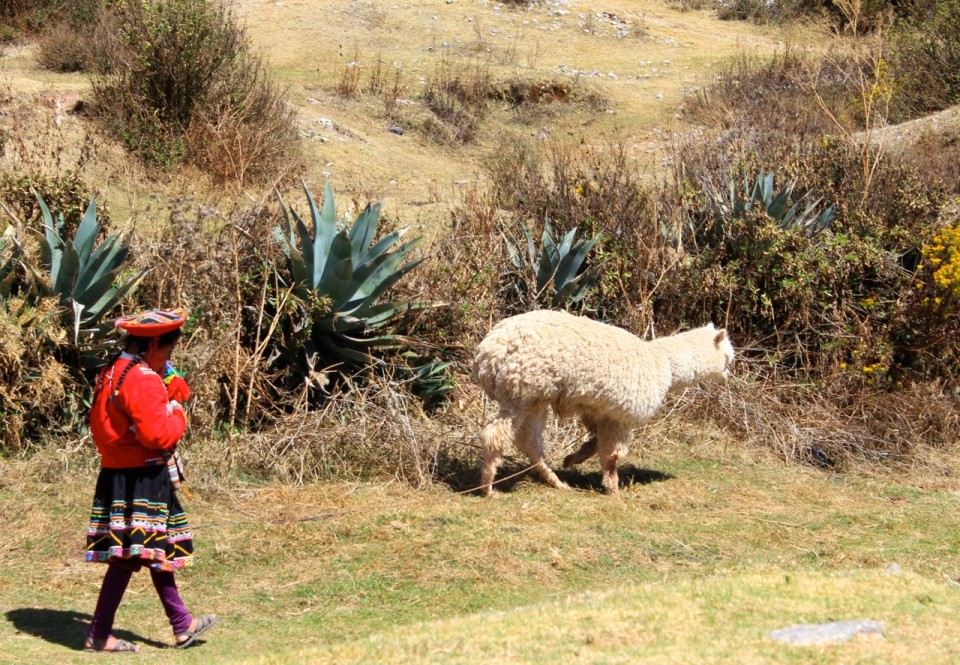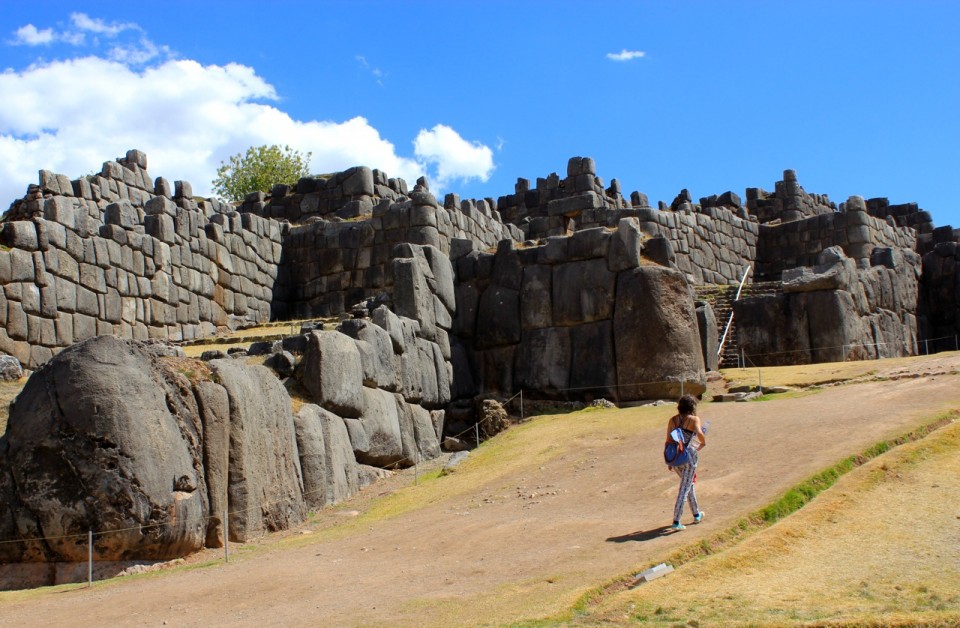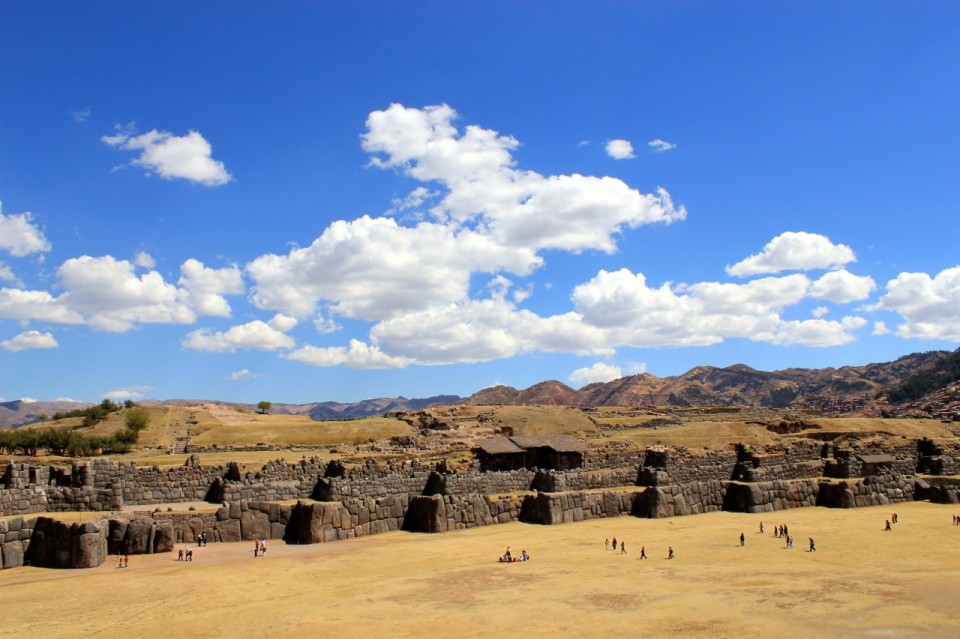It took us an hour to get to Pucallpa from Iquitos in a plane. The other option was taking a five-day journey in a boat and the price was almost the same. And we didn’t feel like travelling in a boat, no matter how alternative we were. I realized that, every now and then, I could treat myself to entering in an office of an aero-company, handing out my MasterCard and getting to my destination opting for an easier alternative. What can I say, I’m getting older.
We didn’t stay much in Pucallpa, we stayed there only for the night. We were planning to go to Cusco and in order to get there we had to go through the Andes. Just like during the first time we had to do it we decided to combine hitchhiking and riding in vans/buses. Still, the first thing we had to go was get out of the jungle. The first station – Tingo Maria.
The city wasn’t that pretty and we’ll only remember it by a family whom we ran into while we were taking a walk near the river and whom we helped with making a dinner. It was quite simple, in fact; Maria noticed a couple of girls cleaning beans by the road after which she sat next to them and started helping them. I followed her example. After the initial surprise the girls soon started talking to us.
Will you take me to your country? – a little girl asked us.
Why not, but first you have to finish school. – Maria answered wisely, stopping herself from bursting into laughter. She didn’t think that the girl’s mother would be saying: Take me, I finished school.
We laughed, finished with the beans, playing with children and with a puppy that barely started walking and that was it. A crazy and unforgettable day in Tingo Maria.
We spent the following night in Huanuco, a small town that we won’t remember for anything. We spent the night and the following morning we moved on. We didn’t have much luck with hitchhiking so we got onto the first bus that which was heading in our direction, southward. We realized that we wouldn’t be able to get to Tarma the same day – it was a nice town, if we were to believe to the locals – but that was okay, we’d get by.
Also, we wanted to adjust gradually to the altitude in Cusco – 3400 meters. Since Huanuco was at 2000 meters above sea level, and Tarma at 3000, spending the night in a town that was half way to our destination wouldn’t be such a bad move.
So, the two of us got there a bit before midnight not even knowing the name of the place we were in. However, the moment we got out of the bus we noticed something strange – the temperature. The people were wearing coats, hats and scarves and the two of us, the smart ones who a couple of days before that left all of our winter clothes at our Croatian friends without the slightest idea that we would arrive in the mountains again – were in shorts and sandals.
We found a room close to the bus station, dressed warmly and went outside to explore the town a bit. We asked the receptionist lady the altitude of the town, but she was clueless. Since we couldn’t find any coca leaves on the mercado, we simply assumed that we got there on a particularly cold day, had dinner and a few drinks and went to sleep.
Exactly at midnight we woke up at the same moment and with some indistinct noises made each other clear that he had splitting headaches. We’d never had one of those ever before. Headache, vertigo, nausea, insomnia – everything was mixing up. We tried everything from sleeping while in a sitting position that was a bit more comfortable for the head the horizontal position, drinking huge amounts of water, to opening the window so the thin air could get inside our small room. We comforted each other that it would pass soon; we tried everything to ease the pain and make it go away.
Nothing worked.
It lasted for hours.
At the end we managed to fall asleep and we woke up with the first rays of sun. I could still feel the headache. We staggered to the street and went to the mercado to search for some medicines. Any kind of them. On our way to the market I read the name of the town on a facade of house – its name was Cerro de Pasco; I googled it in order to find out its elevation. Its elevation had to be higher than 2700 meters, which was the altitude of Cajamarca, where we felt the symptoms of height disease for the first time.
Oh, my God – I stopped in the middle of the street with my mouth wide open, not taking my eyes off my phone.
What happened? – Maria asked me.
Listen to this: Cerro de Pasco is a city in central Peru, located at the top of the Andean mountains. It is the capital of the Pasco region, and an important mining center. At 14,200 feet (a little bit more than 4,330 m) elevation, it is one of the highest cities in the world, for sure the highest city of over 50,000 inhabitants, the elevation even reaches 4,380 m in the Yanacancha area.
Let’s get out of here!
We found the lady who was selling the coca leaves and started chewing it. We had some fresh fruit for the breakfast and made the tea out of coca leaves but it didn’t help a lot. The lady told us that the previous night had been “a bit cold” and that the temperature got a bit under the zero degrees °C. We got back to our room, dead tired, told the reception lady that her hometown was a bit too high, and wobbled to the bus station. We got onto the first bus since all we wanted was get out of there as soon as possible.
A soon as we begun going down the mountain our body started showing weak signs of recovering. On the way to Tarma we had to change two local buses and a car because the last part of the road was closed, as it often happens when you drive through the Andes. We didn’t want to wait on one spot with poor driver so we decided to talk a walk through the village: it could help us to clear our head a bit more.
As we were walking down the street of a half-abandoned village I accidentally took a look at what Maria was doing, as she was walking a few meters away from me, when I saw that she was two steps from stepping into an open manhole. I was sure she’d seen it. Or maybe she hadn’t.
Look out!
Everything happened as if were in slow motion – she made a step forward, turned her head towards me and started sinking.
A second later she was safe next to me.
We weren’t sure how it happened but I must’ve somehow caught her in the air and put her on the road because all she had to remind her of falling into the manhole was a big bruise on her leg and a few scratches. She was quite lucky.
We wanted to take a walk to clear our mind and we got exactly what we wanted. Also, I finally had an excuse to reproach her for that tripping over a couple of times during the following days each time I spotted the smallest bump on the road. We learnt something from it – always be present in the moment with your full attention focused on what you’re doing no matter how big the thing you do is – it can be the simplest walking down the road.
In Tarma we found an excellent room in the middle of the town. Our definition of an excellent room while on a trip is the following: if it’s clean and cheap, if you get clean towels, toilet paper and soap without having to ask for it on the reception you can call it excellent. Above all, if it has warm water and access to internet you can’t ask for more. Sheer luxury. We couldn’t be more surprised when the following day we got to experience the personnel cleaning our room and doing our beds while we were taking a morning walk through the town.
The next stop was Ayacucho and the road that led to it was surrounded by beautiful nature – it reminded us of the first time we got through the Andes. The only difference was that the road wasn’t as bad as the first one – this one was asphalted, at least one part of it – so the situation wasn’t that tricky when two cars had to pass by each other. Still, it was a good thing that the traffic wasn’t too thick.
Ayacucho, on the other hand, reminded us of Cajamarca: it was situated on the foot of a hill (we climbed it and enjoyed the view from the top and nearly got lost on our way back to the town; during that time Maria told me how when she was little two of her friends and her spent the night on one mountain north of Zagreb, on their sleighs, and in the morning, having spent the entire night looking for them, the rescuers finally found them), they were at the same elevation (after that night at 4300 meters we didn’t have any problem with adjusting to the height), there were many churches – 33 of them, in fact, one church for every year of Jesus’s life.
Hitchhiking through the Andes (we oriented mainly on newer trucks usually owned by rich locals who didn’t ask you to pay for the ride) we made a stop in a small village where we ended up having lunch with the truck drivers who were, just like us, waiting for the work in progress on the road to be over. We stayed away from the manholes, took a few photos of old ladies and when we got bored of waiting we started walking in the direction we were supposed to go. Two hours after that we road was passable our driver picked us up a few kilometres from the place we stopped and dropped us off to our next stop – Chincheros.
Just like almost every night we found a room, negotiated its price, and took a walk around the town, sat on a bench, found a few restaurants with affordable prices: I ordered a local specialty and Maria some rice after which she took a plastic bag with some vegetables in it and started slicing tomatoes, cucumbers and other vegetables. One’s choice is quite limited when you don’t eat meat.
I also reduced the quantity of meat I eat: I normally consume a lot of rice, vegetables and fish (if there’s any) that is very cheap in Peru. But now, however, I ordered something I didn’t know what it was and I got chicken on my plate. I hadn’t had any of it in more than a month.
I didn’t sleep well that night. I kept turning in the bed, having these weird dreams which made me wonder in the morning – when we had the whole ayahuasca ceremony we consumed the plant and absorbed its energy which helped us to arrive to certain understanding. Does the same thing happen with everything we consume? Air, food, water? Did my eating chicken which, most probably, had spent its entire life in captivation, make me have all those bad dreams? Did its negative energy transformed into my bad dream? Could that be the reason of people being unhappy? Are we turning into captivated baby chickens? Are we becoming what we eat?
It could make sense; it totally could. The life of most people looks just like that – like they are in a cage. So, you live in a cage, every first day in a month you have to pay a certain amount of your hard earn money to pay someone to let you stay in that cage. If you don’t pay, you’re out. If you were a chicken, that would correspond to being killed. You do what the guard of your cage tells you to do: you eat when he lets you and there is a certain role that you perform: your function is to lay eggs and serve as food. In other words, you have to contribute to a certain company, vote for a certain political party, watch TV and buy newspapers.
Us Chickens!
—
We arrived to Cusco.
Cusco was definitely the most appealing among the Peruvian towns we’d visited. The streets were clean, there were street lamps, there weren’t that many street vendors as in other towns, there were actually street lights and the drivers respected the street signs. Also, every now and then we’d run into some tourists and we weren’t that used to seeing tourists that often. I guess we were n0t that special there.
Maria had been in Cusco a couple of year before that, but she’d never visited Machu Picchu which was strange. Everyone does that.
Anyway, we decided to visit it now.
While we were studying the most economical way to get to Machu Picchu we explored Cusco. We admired Plaza de Armas, the most beautiful square we’d seen, we observed the colorful graffiti which depicted the history of the town that once had been the capital of the empire of the Incas, we tried to see Saksaywaman, the ruins in the outskirts of the town, but we gave up on the idea when we were informed about the ticket price. At least, for a moment. A local passenger heard us talking about wanting to get there and told us that there was another way to get in there without having to pay anything.
In order to do that, first we had to get to the top of the town. From that hill, accompanied by a number of crosses and a huge white statue of Jesus, we admired the panoramic view of the town, we hung out with llamas and alpacas, and afterwards we devised a cunning plan of how to get in the complex without having to pay a fortune for it. At first sight, our plan was quite simple: we would jump over a small wall just in the place where a public toilet disturbed the view of the people who were charging the entrance and simply walk inside pretending to be a part of group of tourists.
Said – done.
We took a walk through the impressive complex, checking out the massive walls that were made of the giant pieces of stone simply put one on the other without any kid of bond material between the pieces. Also, we enjoyed the view.
The following day we found out the easiest and cheapest way to get to Machu Picchu. We googled for the information, asked the locals and the people we knew who’d been there. We opted for the option no one had written about before. It was definitely the cheapest one (less than 5$ per person), no license or reservation of any kind was needed.
However, we couldn’t get away from Cusco that day since there was a general strike going on! In Cusco, every day there was some kind of a strike and that one was the biggest we’d seen: all the shops were closed, the public transportation wasn’t functioning – everyone were on their feet.
The reason for the strike was the following: the people disagreed with the government’s politics of finding work, labor rights and low wages. I mean, how could they not go on a strike when you think that the rate of unemployment was the head-spinning 5,8%?! In my dear homeland, on the other hand, the people were going on a strike and asking for referendums because they wanted…what exactly?
The following morning we found a local van and headed for the exploration of Machu Picchu. You’ll read very soon about what happened there.
